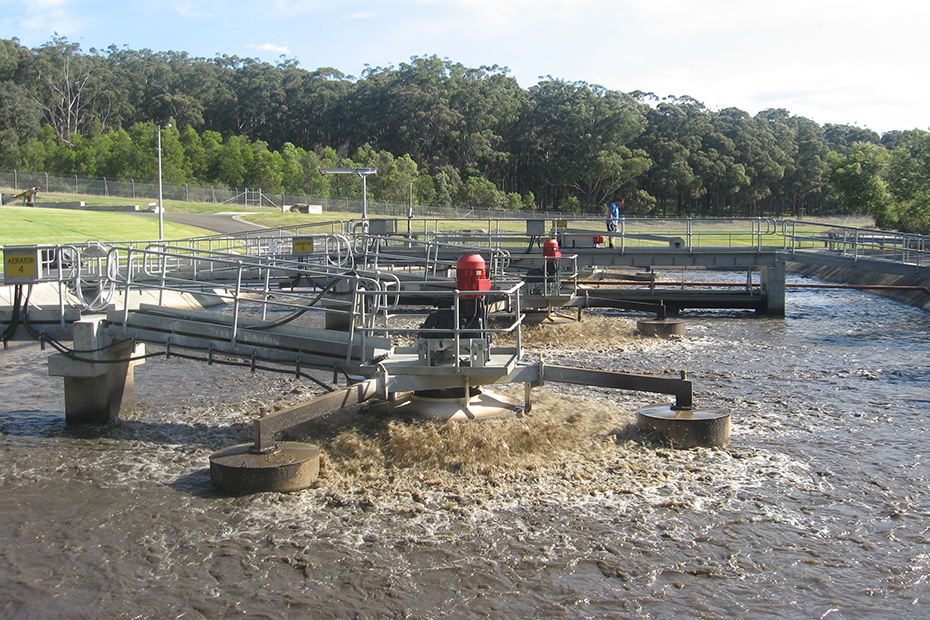Wastewater treatment process
Shoalhaven Water operate 13 wastewater treatment plants. Our operations include an environmentally friendly recycling scheme which allows treated effluent to be reused on local farms and sports fields.
Our wastewater treatment uses advanced physical, biological, and mechanical processes to treat incoming wastewater.

Treatment process
Our wastewater treatment process is broken into three (3) stages:
Primary treatment
Incoming wastewater (effluent) enters the treatment plant at the inlet works.
The effluent passes through a series of screens first removing all non-biodegradable material such as plastics, cotton tips and sanitary products, then through a circular aerated grit chamber for removal of grit, sand, and rocks.
The remaining organic product then makes it way via channels and pipes to the secondary treatment stage. The inorganic (non-biodegradable) products are collected and taken to offsite landfill.
Secondary treatment

Image of an aeration tank
The secondary stage of treatment converts non-settleable organic solids to settleable solids and the separation of those from the liquid. It is made up of three (3) phases:
- Aeration
- Settling
- Decanting
Aeration
Surface aerators vigorously mix the incoming effluent with the activated sludge (aerobic bacteria) keeping it in suspension in the presence of supplied oxygen. Micro-organisms in the sludge use the organic material in the effluent as a food source for normal life functions and synthesis of new bacterial cells.
Alum can be added to help remove phosphorus and enhance settlement. The Alum bound phosphorus salts sink to the bottom of the tank along with other solids.
Settling
When the aerators are switched off the effluent becomes still and has time to settle. Having no oxygen supply, the microorganisms use carbon in the organic matter as a food source, converting nitrates to nitrogen gas.
During this phase, the solids separate and settle from the liquid giving clarification to the upper part of the tank.
Decanting
After settling, the clear effluent is decanted from the tank into a centrally located trough. The decanted water is piped into an equalisation basin for holding before its final treatment.
Secondary Alum dosing can be used at this point for removal of phosphorus.
Tertiary treatment
The final stage of the treatment process involves:
- Pressure filtration
- Disinfection
- Ultraviolet
- Biosolids
Pressure filtration
The filtration system is filled with media composing of sand and anthracite. The water passing through the filters helps reduce remaining faecal coliforms and BOD5 levels.
Disinfection
After filtration the water is injected with chlorine gas for disinfection, reducing the amount of pathogens (bacteria) remaining. This is a requirement for public health.
Ultraviolet
A blast of ultraviolet light assists with further removal of microbiological contamination in water.
What are biosolids?
Biosolids are the organic solid waste product that is a direct result from the treatment process. It is processed and classified for beneficial reuse on farmland. Wastewater contains nutrient-rich solids which improve soil for agriculture and grass.
Biosolids come from the aeration phase of the treatment process. Activated sludge is pumped from the bottom of the aeration basin to the sludge lagoons where it is left to mature before being removed and processed through a dewatering machine called a 'centrifuge'.
The end product is left to dry before testing and classification for use. The processed usable produce is called biosolids.
On average we can produce 40-50 tonnes of dry biosolids per year.

Image of processed biosolids on a drying bed